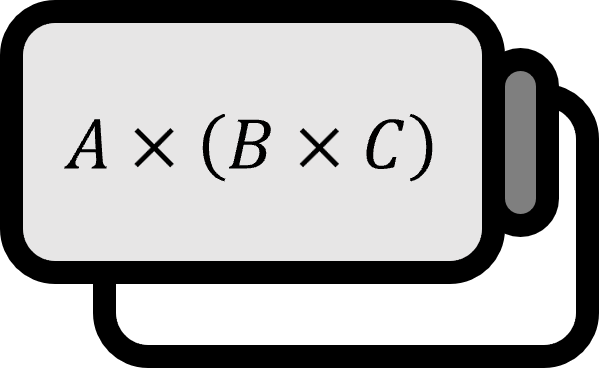Infinitesimal Area in Polar Coordinates, Infinitesimal Volume in Cylindrical Coordinates
Formula
In polar coordinates, the infinitesimal area is as follows.
$$ dA=rdrd\theta $$
In cylindrical coordinates, the infinitesimal volume and the infinitesimal surface area of a cylinder are as follows.
$$ dV=\rho d\rho d\phi dz \\ dA=\rho d\phi dz $$
Description

Polar Coordinates $\mathbf{r}=\mathbf{r}(r,\theta)$
The infinitesimal area, as shown in the figure, is (length of the green line)$\times$(length of the blue line). The green line represents the infinitesimal change in the radial direction, so $\color{green}{dr}$. The blue line is an arc with diameter $r$ and central angle $d\theta$. Since the length of an arc is the product of its diameter and angle, the length of the blue line is $\color{blue}{rd\theta}$. Therefore, the infinitesimal area is
$$ dA=rdr d\theta $$
■
Cylindrical Coordinates $\mathbf{r}=\mathbf{r}(\rho,\phi,z)$
In polar coordinates, you only need to multiply the infinitesimal change in height $\color{red}{dz}$ to the infinitesimal area.
$$ dV=\rho d\rho d\phi dz $$
The surface area of the cylinder does not require multiplying by the infinitesimal change in the length component, so
$$ dA=\rho d\phi dz $$
